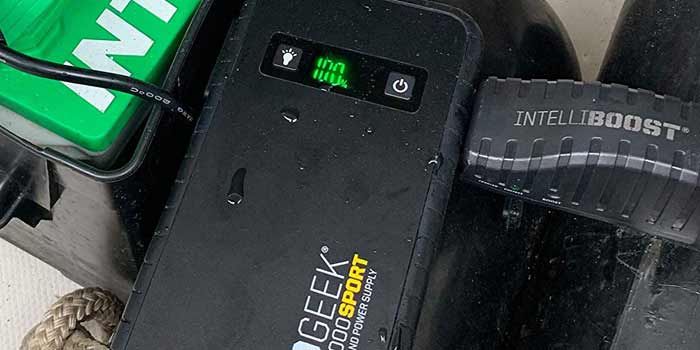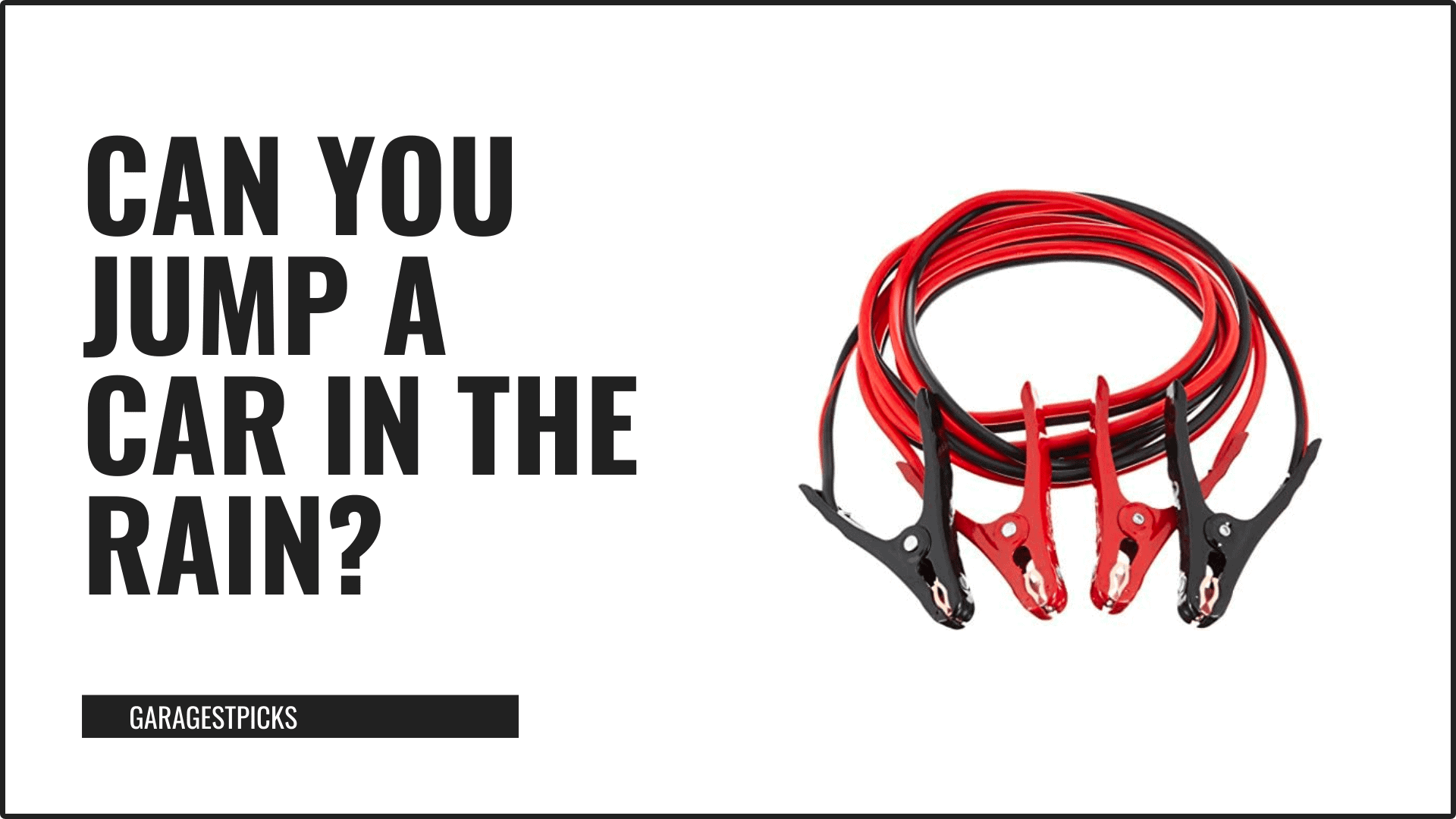I have been asked numerous times, “Can you jump-start a car in the rain?”
People asking this question are worried about safety – rightfully so.
The answer is yes, you can jump-start a car in the rain.
Hang on, I’ll explain.
Most cars’ electrical systems run on DC 12 volts (or 24 volts if it is a big truck) and 5v. The amperage of the car battery is around 48 to 50 Ah (amp hours). This voltage and current range are very safe to work with. This means you can jump a car in the rain.
Some people might not know how often a car’s under-hood gets splashed with water when driving during rain and on wet roads. That does not cause anything to go bad or batteries to shoot sparks.
The car’s electrical system is designed to stay safe in wet conditions.
When it comes to using a portable jump starter, to jump-start a car in rain, it is also safe. As safe as jump-starting a car on a sunny day.
Most of the best jump starters have their 12V jumper ports covered with plastic or rubber protection caps to keep the water and moisture out.

So instead of worrying about rain during a jump-start situation, you should be worrying more about hooking the terminals the wrong way (if your jump starter does not have reverse polarity protection).
If you are jump-starting with another car, then you should be extra careful about polarity and always double-check the connections.
The only things you should worry about jump-starting a car in the rain are not slipping on wet ground, and not catching a cold. The “Can you jump a car in the rain” part is safe.
And if it is raining a lot. Like A LOT. Avoid your car from a flood. When you start to jump-start your car, be extra careful about the raindrops.
On the other hand, the only electrical system in the car that can hurt you is the car’s ignition system.
It produces a lot of voltage, but a very small amount of amps. The shock from such voltages feels like a stun gun. Likely not enough to kill you, but more than enough to make you remember not to touch that thing again.
And don’t ask in the comments how I know about this…

